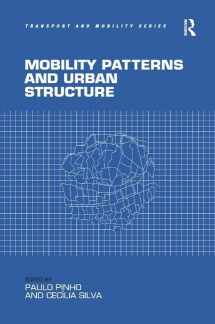
Mobility Patterns and Urban Structure (Transport and Mobility)
Book details
Summary
Description
Despite extensive efforts to understand the overall effect of urban structure on the current patterns of urban mobility, we are still far from a consensual perspective on this complex matter. To help build agreement on the factors influencing travel behaviour, this book discusses the influence of alternative urban structures on sustainable mobility. Bringing together two existing and complementary methods to study the relationship between urban structure and mobility, the authors compare two case studies with distinct urban structures and travel behaviour (Copenhagen and Oporto). Of particular concern is the influence of urban structure factors, namely land use and transport system factors, and motivational factors related to the social, economic and cultural characteristics of the individual traveller. The research presented in this book highlights the relevance of centrality in travel behaviour and in more sustainable travel choices. Different operational forms of the centrality concept are revealed as important: it is shown that more sustainable travel can be influenced by several urban structure factors and that no particular combination is required as long as a certain level of centrality is provided. Finally, the book concludes that urban structure can, on the one hand, constrain and, on the other hand, influence travel choice.


We would LOVE it if you could help us and other readers by reviewing the book
Book review



